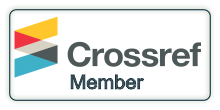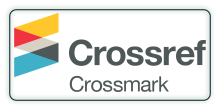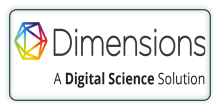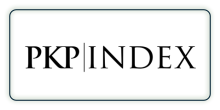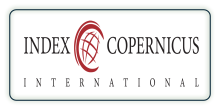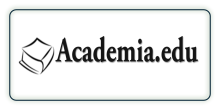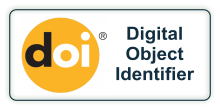THE ROLE OF LIGHTING DESIGN ON HUMAN PSYCHOLOGY IN INTERIOR SPACES (FASHION RETAIL STORE CASE STUDY)
DOI:
https://doi.org/10.29121/ijetmr.v12.i4.2025.1560Keywords:
Lighting Psychology, Lighting Design, Well-Being, Sustainability, Retail Store DesignAbstract
Lighting is a powerful tool for creating atmosphere and enhancing the sense of space, not just ensuring that objects are visible. The study examines the impact of light on interior design and the relationship between lighting effects and human psychology in this context, with a focus on how these effects influence human well-being. It also identifies lighting types and concepts that enhance human emotions. The research employs a descriptive, theoretical, and analytical approach to exploring the relationship between lighting and human psychology in interior design studios, presenting several case studies that illustrate how thoughtful lighting design influences human psychology. Interior design relies heavily on lighting, which has a significant impact on interaction and mental well-being. This involves balancing artificial and natural illumination, incorporating biophilic elements, and considering psychological aspects. Therefore, studying the effects of sustainability can emphasize the relationship between natural and constructed environments, maximizing the use of natural light and minimizing the reliance on artificial light sources. Finally, the study will present a case study of the workshop in a design psychology course (603203), in Department of Design, Oman College of Management and Technology, which aimed to apply the concept of psychology and lighting design involving color in retail store spaces, that discover the impact of lighting on customers in fashion stores. In conclusion, the study contributes to the understanding of the relationship between lighting and psychology in interior design, providing criteria for interior designers to enhance their experience and promote the development of innovative, well-rounded designers. Designers must consider the psychological impact of light in alignment with the purpose of space. The perfect lighting design creates a well-balanced environment for humans, increasing productivity. The results of the workshop were outstanding, as they analyzed consumer psychology through various lighting and color design approaches.
Downloads
References
Abbattista, P. (2025). Decorative Lighting Industry.
Allen, A. M. S. (2024). Open Kitchen Lighting.
Almrsal. (2024). Barstools Kitchen Island Lighting.
Boyce, P. R. (2003). Human Factors in Lighting. Crc Press. https://doi.org/10.1201/9780203426340
Edwardgeorgelondon. (2024). The Ultimate Guide on how to Create and Master the Modern Color Palette.
Edwards, L., & Torcellini, P. (2002). Literature Review of the Effects of Natural Light on Building Occupants. https://doi.org/10.2172/15000841
Elnaggar, H. B. J. J. o. D. S., & Arts, A. (2022). Illumination and Color in Interior Design of Living Room, 3 (1), 50–63. https://doi.org/10.21608/jdsaa.2021.76256.1112
Hunsaker, C. (2023). Circadian Lighting.
Inc., G. (2011). Google Offices, Dublin.
Lightology. (2018). How to Light a Living Room.
Lightology. (2025). Future of Lighting.
Lightology. (2025). Lighting Measurements for Installation.
Lightology. (2025). Warm Dim Technology.
Madumarova, M. J. G. I. I. R. J. (2023). The Influence of Color and Light on Interior Spaces: An Analysis of Psychological and Design Perspectives, 11 (11), 210–212.
Mahmoud, N. A. (2023). The Lighting Effects on the Tactile Perception in Interior Design Studios. In EDULEARN23 Proceedings. IATED.
Marchese, K. (2024). Biophilic Design Guide - Kellert's Principles and the Benefits of Nature.
Oman College of Management and Technology (OCMT). (2024). Workshop Projects of the Design Psychology Course (603203) in the Department of Design, Sultanate of Oman. Tools of Design.
Ozenen, G. (2023). Lighting Sources used for Interior Design. In Architectural Interior Lighting (pp. 37–49). Springer. https://doi.org/10.1007/978-3-031-49695-0_5
Pymnts. (2016). Starbucks Invests in Italian Bakery Princi.
Sculptform. (2021). Biophilic Design Theory.
Snapshots, O. (2024). Biophilic Design.
Published
How to Cite
Issue
Section
License
Copyright (c) 2025 Ola M. Mohammed Ahmed, Amna Ali Talib Al Sheyadi

This work is licensed under a Creative Commons Attribution 4.0 International License.
License and Copyright Agreement
In submitting the manuscript to the journal, the authors certify that:
- They are authorized by their co-authors to enter into these arrangements.
- The work described has not been formally published before, except in the form of an abstract or as part of a published lecture, review, thesis, or overlay journal.
- That it is not under consideration for publication elsewhere.
- That its release has been approved by all the author(s) and by the responsible authorities – tacitly or explicitly – of the institutes where the work has been carried out.
- They secure the right to reproduce any material that has already been published or copyrighted elsewhere.
- They agree to the following license and copyright agreement.
Copyright
Authors who publish with International Journal of Engineering Technologies and Management Research agree to the following terms:
- Authors retain copyright and grant the journal right of first publication with the work simultaneously licensed under a Creative Commons Attribution License (CC BY-SA 4.0) that allows others to share the work with an acknowledgment of the work's authorship and initial publication in this journal.
- Authors can enter into separate, additional contractual arrangements for the non-exclusive distribution of the journal's published version of the work (e.g., post it to an institutional repository or edit it in a book), with an acknowledgment of its initial publication in this journal.
- Authors are permitted and encouraged to post their work online (e.g., in institutional repositories or on their website) before and during the submission process, as it can lead to productive exchanges, as well as earlier and greater citation of published work.
For More info, please visit CopyRight Section












